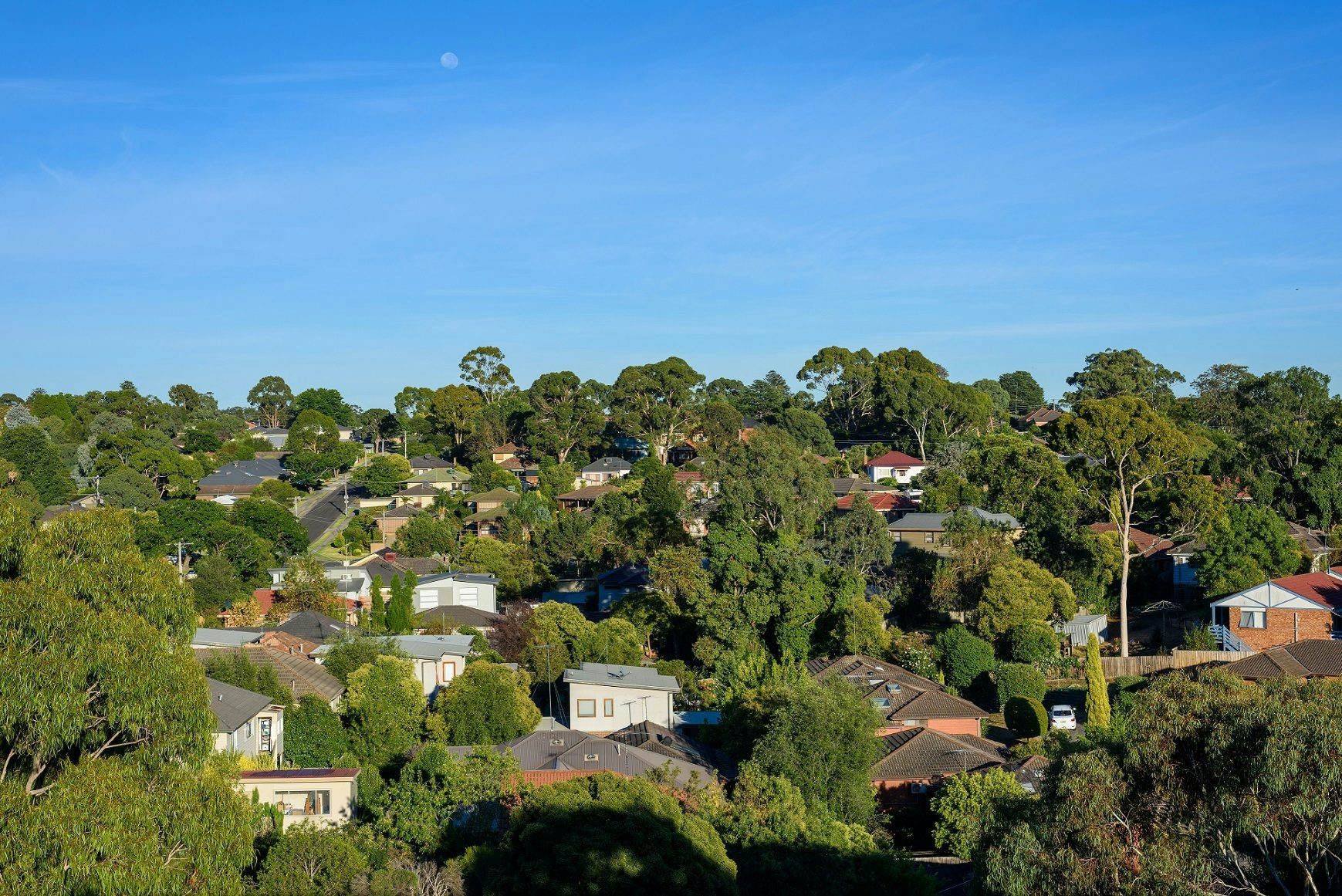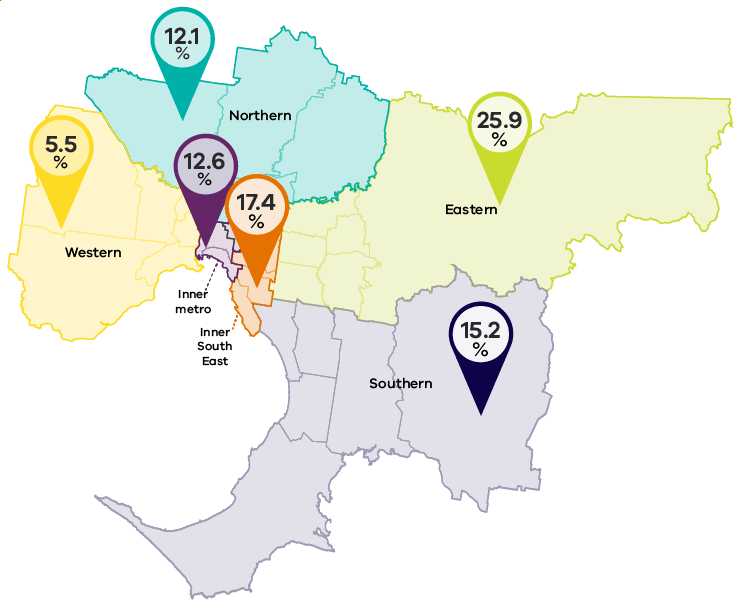Getting to the root of Victoria’s tree canopy struggle

Our tree canopies are struggling for space with small lots, renovated homes, new townhouses and apartment blocks, all of which are accommodating Victoria’s growing population.
When we use the word ‘infrastructure’, we’re not just talking about roads and buildings.
Environmental infrastructure can refer to parks, green open spaces and corridors, woodlands, open countryside, sporting fields and private gardens. The elements within these different spaces work together to improve environmental health and mitigate the effects of climate change.
Urban vegetation is important and has multiple functions and benefits for both the environment and people, improving community health and wellbeing, reducing urban temperatures and supporting ecosystems and biodiversity.
Not only do tree canopies absorb trapped heat, provide shade and support evaporative cooling, research also shows they promote active transport by providing cool and shaded routes for people to cycle or walk to their destination.
To highlight the importance of these myriad of benefits, Infrastructure Victoria recently made a submission and appeared before a state parliamentary inquiry into environmental infrastructure for growth areas.
Read our full submission here.


Our submission points to a lack of tree canopy cover in the outer western and northern metropolitan areas. To address this, we’ve recommended key actions to harness and improve the quality and access to green, open spaces for all Victorians.
This includes making better use of existing publicly-owned land, funding open space improvements and exploring incentives to keep vegetation in developing areas.
Our submission was made to the Legislative Assembly Environment and Planning Committee Inquiry into Environmental Infrastructure for Growing Populations.
We are currently reviewing the importance of environmental infrastructure as part of our update to Victoria’s 30-year infrastructure strategy, which will be finalised and delivered to parliament later this year.
The draft strategy, which we released for public consultation in December 2020, included two draft recommendations that deal with tree canopy cover and green public open spaces:
Draft recommendation 71: Achieve 30% tree canopy coverage in new growth areas by mandating coverage during precinct development. Fund relevant Victorian Government agencies and local government to plant, replace and maintain canopy trees.
Draft recommendation 36: Immediately reform the developer open space contribution scheme and provide direct funding, to create an interconnected open space network and extend Melbourne’s urban tree canopy
These draft recommendations reflect what the Victorian community told us in 2019 as part of our consultation through the Density done well report.
This isn’t the first time we’ve called for more high-quality environmental infrastructure in urban areas. Our submission builds on Victoria’s first 30-year infrastructure strategy, released in 2016, which highlighted the need for multi-functional, green spaces to manage the impacts of increased residential density.